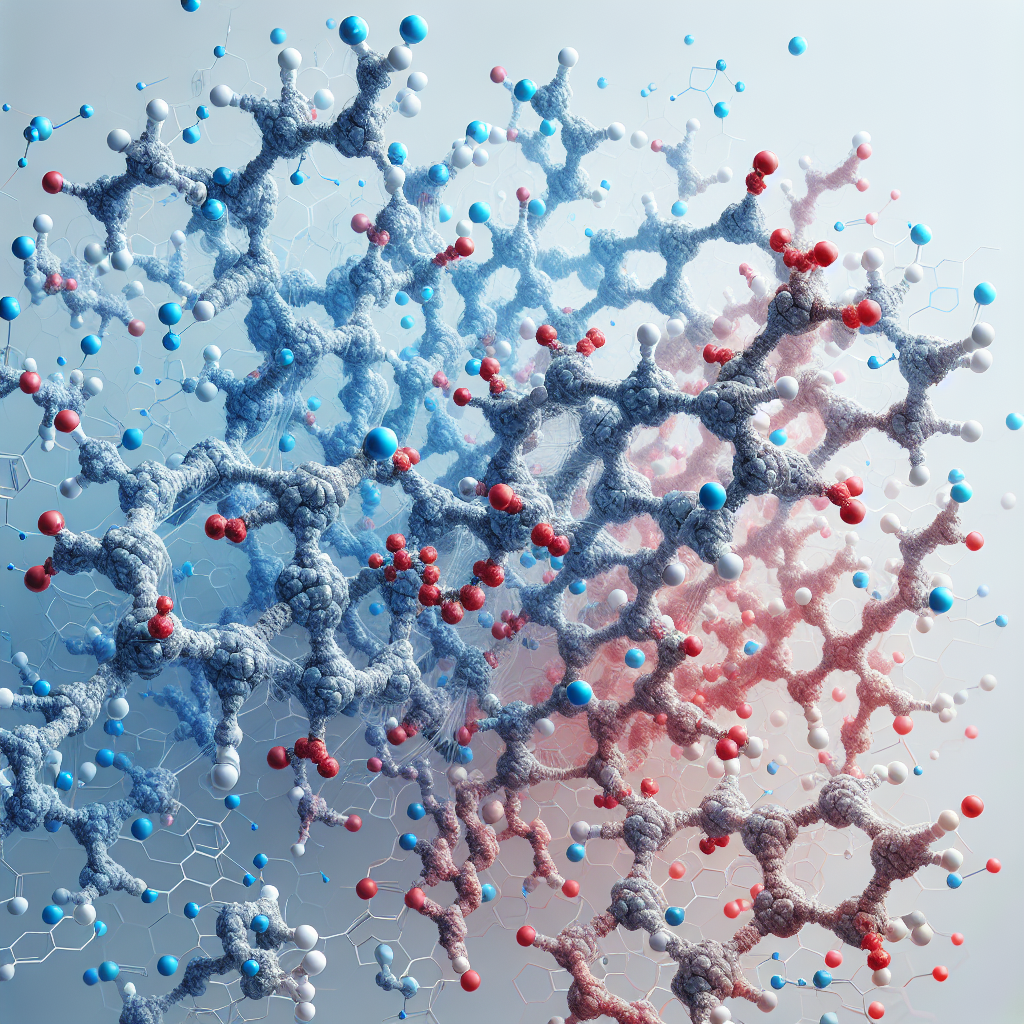Age-related muscle loss, or sarcopenia, presents a significant challenge for adults over 50. This natural decline accelerates at a rate of approximately 3-8% per decade after age 30, with the pace quickening after 60. For supplement manufacturers, this demographic shift represents both a challenge and an opportunity. As the global population ages, the demand for effective nutritional solutions that combat muscle deterioration has never been greater.
The science is clear: specific amino acids play a crucial role in preserving and building muscle tissue in older adults. However, many current supplement formulations fail to address the unique physiological needs of this growing consumer base. The aging body processes nutrients differently, particularly when it comes to protein synthesis and amino acid utilization.
Manufacturers who understand these age-specific changes can develop targeted formulations that genuinely address sarcopenia. This isn’t merely about adding ingredients to a formula—it’s about precisely calibrating amino acid profiles to overcome the anabolic resistance that characterizes aging muscle tissue. Companies that master this science will position themselves at the forefront of a rapidly expanding market segment.
Branched-Chain Amino Acids: The Foundation for Mature Muscle Support
Branched-Chain Amino Acids (BCAAs) have emerged as the cornerstone of effective muscle preservation strategies for older adults. Leucine, isoleucine, and valine—the three primary BCAAs—serve not merely as building blocks for protein but as metabolic triggers that stimulate muscle protein synthesis through pathways that become less responsive with age.
Leucine: The Anabolic Trigger
Leucine deserves special attention in any discussion about muscle preservation for adults over 50. Research consistently demonstrates that older adults require significantly higher leucine concentrations to achieve the same muscle-building effects as younger individuals. While younger adults might respond well to 1-2g of leucine, studies suggest that those over 50 may need 2.5-3g per serving to overcome age-related anabolic resistance.
This amino acid directly activates the mTOR (mammalian target of rapamycin) pathway, which serves as the primary cellular switch for protein synthesis. With aging, this pathway becomes less sensitive, requiring greater leucine concentrations to achieve the same anabolic effect. Forward-thinking manufacturers are now developing leucine-enriched formulations specifically calibrated for older consumers, with clinical studies showing improvements in lean mass and strength when these optimized ratios are used.
Isoleucine and Valine: Supporting Players with Critical Roles
While leucine often takes the spotlight, isoleucine and valine play complementary roles that should not be overlooked in formulations for older adults. Isoleucine promotes glucose uptake and utilization in muscle cells—particularly important for seniors who may experience declining insulin sensitivity with age. Valine contributes to energy production and tissue repair, supporting overall muscle metabolism.
The optimal ratio of these three BCAAs has been the subject of considerable research. Traditional BCAA supplements often use a 2:1:1 ratio (leucine:isoleucine:valine), but emerging evidence suggests that for older adults, a 4:1:1 or even 6:1:1 ratio may be more effective at stimulating muscle protein synthesis and overcoming the anabolic resistance characteristic of aging muscles. Quality factors in amino acid formulations play a crucial role in efficacy for this demographic.
Innovative manufacturers are now developing age-specific BCAA formulations that reflect these ratios, supported by clinical validation to demonstrate efficacy in older populations. This represents a significant opportunity for product differentiation in an increasingly competitive market.
Beyond BCAAs: Other Critical Amino Acids for Mature Muscle Health
While BCAAs form the foundation of effective muscle support for older adults, a comprehensive approach must include several other key amino acids and related compounds. Manufacturers who incorporate these elements into their formulations can provide more complete solutions for combating age-related muscle loss.
Creatine: Underutilized in Senior Formulations
Creatine has been extensively studied for its benefits in improving strength, power, and muscle mass—benefits that extend to older populations. Research has demonstrated that creatine supplementation in adults over 50, particularly when combined with resistance training, can significantly improve muscle mass, strength, and functional capacity. Studies published in the Journal of Cachexia, Sarcopenia and Muscle confirm these benefits specifically for the aging population.
Notably, a meta-analysis of 22 studies found that creatine supplementation increased lean body mass by an average of 1.33kg in older adults engaging in resistance training, compared to training alone. Yet many manufacturers have overlooked creatine in formulations targeting seniors due to outdated perceptions that it’s primarily for younger athletes. Recent scientific research on supplement benefits strongly supports creatine’s value for older adults.
The most bioavailable form for older adults appears to be creatine monohydrate at a daily dose of 3-5g, with some research suggesting that micronized versions may offer improved digestibility—an important consideration for older consumers who may experience gastrointestinal changes with age.
Glutamine: Supporting Recovery and Immune Function
Glutamine, the most abundant free amino acid in the body, plays a crucial role in muscle recovery and immune function—both particularly relevant for older adults. With age, natural glutamine production may decline, potentially contributing to longer recovery times and reduced training adaptations.
For manufacturers developing products for the over-50 demographic, incorporating L-glutamine at doses of 3-5g daily can help support muscle recovery processes and maintain immune function during training periods. Research indicates that glutamine supplementation may help reduce muscle soreness and improve recovery in older adults engaged in resistance training programs.
β-Alanine: Enhancing Exercise Capacity
β-Alanine serves as a precursor to carnosine, a dipeptide that helps buffer acid in muscles during exercise. This buffering capacity can be particularly valuable for older adults, as it may help extend exercise duration and performance, allowing for more effective training sessions that stimulate muscle growth and maintenance.
Studies have shown that β-alanine supplementation (3-5g daily for at least 4 weeks) can improve exercise capacity and reduce fatigue in older adults. Manufacturers should note that the typical tingling sensation (paresthesia) associated with β-alanine can be mitigated by using sustained-release formulations, which may be more comfortable for older consumers.
Alanine and Proline: Supporting Collagen and Connective Tissue
While much attention focuses on muscle protein synthesis, maintaining the integrity of connective tissue becomes increasingly important with age. Alanine and proline are key components of collagen, which provides structural support to muscles and facilitates proper function.
Including these amino acids in formulations for older adults can support not just muscle tissue but the surrounding matrix necessary for optimal strength and function. This holistic approach to muscle support represents an opportunity for manufacturers to differentiate their products with formulations that address multiple aspects of age-related physical decline.
Manufacturing Considerations for Effective Senior-Focused Amino Acid Supplements
Creating truly effective amino acid supplements for older adults requires more than simply understanding which ingredients to include. Manufacturers must also address several production and formulation challenges to ensure their products deliver on their promises.
Purity and Quality Control: Non-Negotiable Standards
For amino acid supplements targeting older adults, purity standards must be exceptionally high. Seniors often take multiple medications and supplements, making potential contamination or ingredient interaction a serious concern. Leading manufacturers are implementing comprehensive testing protocols that exceed FDA and USP requirements, ensuring their amino acid ingredients are free from contaminants and accurately labeled.
The source of amino acids significantly impacts their quality and effectiveness. Microbial fermentation has emerged as the preferred method for producing high-quality BCAAs and other amino acids for supplementation. This process, when properly controlled, yields amino acids with superior bioavailability and purity compared to alternatives like acid hydrolysis or extraction.
NutraAeon’s commitment to quality aligns perfectly with these requirements, providing manufacturers with amino acid ingredients that meet stringent purity standards through comprehensive testing and transparent documentation. This approach ensures that finished products deliver consistent, safe results for older consumers.
Bioavailability: Overcoming Age-Related Absorption Challenges
Aging brings changes to the digestive system that can impact nutrient absorption. Manufacturers developing products for older adults must consider these physiological changes in their formulations. Several strategies can enhance the bioavailability of amino acid supplements:
- Using free-form amino acids rather than peptide-bound forms for more direct absorption
- Including vitamin B6, which plays a key role in amino acid metabolism
- Adding small amounts of zinc, which supports protein synthesis pathways
- Incorporating black pepper extract (piperine) to enhance amino acid absorption
These formulation strategies require sophisticated manufacturing capabilities and ingredient expertise. By partnering with specialized ingredient suppliers like NutraAeon, manufacturers can access the technical knowledge needed to develop truly effective products for this demographic.
Dosage Forms and Palatability: Critical for Compliance
Product format significantly influences compliance, especially among older consumers. While powders offer the most flexibility in delivering effective doses of amino acids, many seniors prefer capsules or ready-to-drink formulations. Manufacturers must balance dose requirements with convenience and palatability.
Innovative approaches include using microencapsulation to mask the bitter taste of certain amino acids, developing effervescent tablet formulations that dissolve easily, and creating portion-controlled single-serve packaging that eliminates measuring. These consumer-friendly formats can significantly improve adherence to supplementation protocols, ultimately determining product effectiveness.
The Future of Muscle Support: Innovation Through Partnership
As the population ages, the market for effective muscle-preserving supplements will continue to expand. Forward-thinking manufacturers have an unprecedented opportunity to develop science-based formulations that make a meaningful difference in how people experience the aging process.
Successful product development in this space requires more than just following trends—it demands a deep understanding of the science behind age-related muscle loss and the manufacturing expertise to deliver effective solutions. By partnering with specialized ingredient suppliers like NutraAeon, manufacturers can access both premium raw materials and the technical expertise needed to formulate truly effective products.
The best amino acids for muscle growth over 50 are only effective when delivered in formulations that address the specific physiological needs of aging bodies. This requires a commitment to quality, transparency, and continuous innovation—values that align perfectly with NutraAeon’s philosophy.
For manufacturers looking to make an impact in this growing market segment, strategic ingredient partnerships are the foundation of success. By collaborating with suppliers who understand the unique challenges of formulating for older adults, companies can develop products that genuinely help people maintain strength, independence, and quality of life as they age.
The path to innovation in muscle support for seniors isn’t found in simply following existing formulation approaches. It requires a dedicated commitment to understanding the science of aging muscle and translating that knowledge into effective nutritional solutions. Through strategic partnerships focused on quality and efficacy, manufacturers can develop products that truly make a difference in the lives of older adults—fulfilling both business objectives and the more meaningful goal of supporting healthy, active aging.


